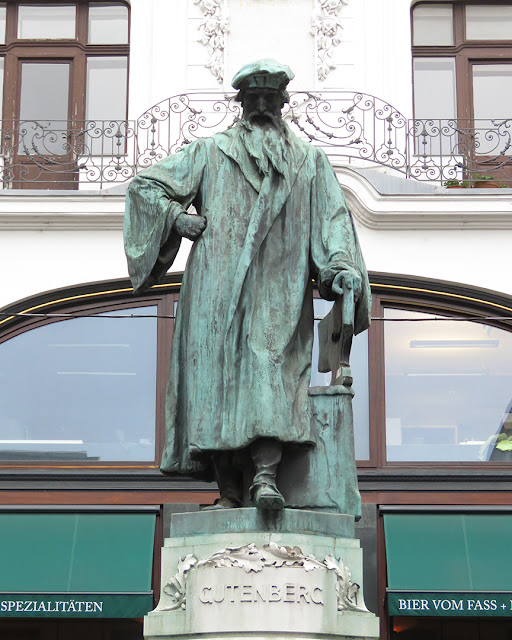Monday, June 6, 2022
Johannes Gutenberg
Johannes Gutenberg by Hans Bitterlich, 1900
Lugeck
Vienna, September 2017
“The Gutenberg monument went up in 1900 (so roughly 500 years after Gutenberg’s birth), thanks to the efforts of a private fundraising committee. The unveiling took place on December 17th in the presence of both Emperor Franz Joseph and the then mayor of Vienna. The monument features a figurative statue of a bearded Gutenberg. He stands on a raised plinth, one hand on his hip. That plinth includes the Latin phrase, Post Nubila Phoebus, meaning ‘after the clouds, comes the sun.’ This hints at the impact of Gutenberg’s invention on European culture. The reliefs add further imagery to this sentiment: a broken column as a symbol for the dark ages, a sleeping wanderer as a symbol for humanity, a laurel tree symbolising success and fame. The rear of the pedestal has the printer coat of arms and a dedication: ‘To the grand master from his grateful followers and admirers’. Hans Bitterlich (1860 – 1949) took 2 1/2 years to make the bronze Gutenberg statue. A noted sculptor of his time, Bitterlich contributed many works to the Viennese cityscape, including the memorial to Empress Elisabeth in the Volksgarten park. The plinth with its reliefs was by the architect Max Fabiani (1865 – 1962), a colleague of Otto Wagner. Fabiani enjoys enduring fame through his design for the Urania building that marks the eastern corner of the city centre, where the River Wien meets the Danube canal.” (The Gutenberg monument, Visiting Vienna)
Subscribe to:
Post Comments (Atom)


No comments:
Post a Comment